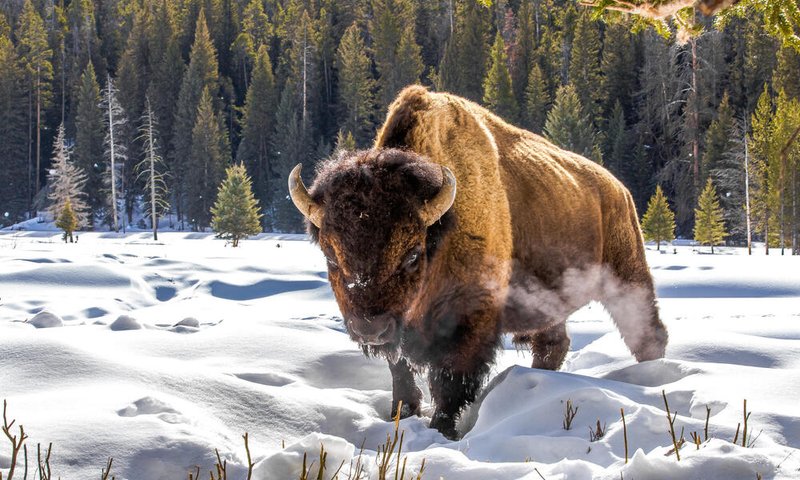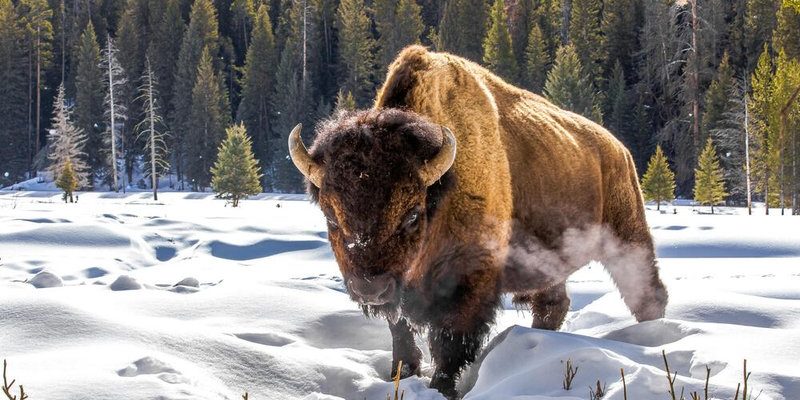
Imagine bison as the original rulers of the plains, their massive frames and shaggy coats commanding respect. However, just like any reigning monarch, they’ve faced challenges that put their future at risk. Factors like habitat loss, hunting, and disease have led to populations dwindling—prompting a global conversation about what we can do to protect them. Understanding their plight is crucial, not just for the bison but for the entire ecosystem they inhabit.
Let’s explore the current status of bison populations, what makes them vulnerable, and the exciting conservation efforts aiming to ensure their survival for generations to come.
The Current Status of Bison Populations
Bison once roamed North America in the millions, but their numbers have plummeted dramatically. At their lowest point in the late 1800s, there were only a few hundred individuals left. Thanks to conservation efforts, that number has grown, but it’s still a delicate situation. Currently, there are about 500,000 bison in North America, according to the National Park Service. However, most of these animals are commercially raised rather than living in the wild.
Bison are classified as near threatened by the International Union for Conservation of Nature (IUCN). While they’re not immediately at risk of extinction, they face significant challenges. The populations that live in protected areas, like Yellowstone National Park, are vital for maintaining genetic diversity and ecosystem balance.
Here are some key points about their populations:
- The majority of bison today are domesticated.
- Wild populations remain relatively small and fragile.
- Conservation areas play a crucial role in their preservation.
Key Threats to Bison Survival
You might be wondering what exactly puts bison at risk. One major threat is habitat loss. As cities expand and agricultural practices change, the natural grasslands where bison thrive are shrinking. Urban development often leads to fragmentation of their habitat, making it harder for them to find food and mates.
Another significant threat is disease. Bison can be vulnerable to diseases like brucellosis, which can affect their reproductive health and overall population. Domestic cattle can carry this disease, leading to troubling interactions between wildlife and livestock.
Furthermore, while hunting helped control populations in the past, improper management today can lead to overharvesting. It’s essential that hunting practices are sustainable and regulated to ensure bison can thrive.
Conservation Efforts for Bison
Thankfully, there are many dedicated organizations and programs working tirelessly to protect bison. Conservationists are focused on several key strategies that have shown promise in recent years.
One major focus is habitat restoration. By protecting and restoring grasslands, these organizations help create a more suitable environment for bison to thrive. This means working alongside farmers and ranchers to implement land-management practices that benefit both wildlife and agriculture.
Another important effort is genetic diversity. Bison populations that were reduced to a few individuals created a genetic bottleneck, which can lead to health issues. Conservationists are now promoting the introduction of wild bison into existing populations. This helps strengthen their genetic pool and increases their resilience against diseases and environmental changes.
Furthermore, educational programs aim to raise awareness about bison conservation. By involving local communities and encouraging stewardship, these efforts provide a more comprehensive approach to safeguarding bison populations.
Success Stories in Bison Conservation
It’s not all doom and gloom! There are some amazing success stories in bison conservation. One standout example is Yellowstone National Park, the site of one of the largest remaining wild herds. Through careful management, the park has seen its bison population grow from just a few dozen to over 4,000 today.
Another inspiring story comes from the American Bison Association, which has been instrumental in promoting sustainable practices among ranchers. By encouraging practices that benefit both bison and the land, they help ensure that these animals can continue to roam the plains.
Also, the return of bison to tribal lands is a remarkable achievement. Many Indigenous communities are reintroducing bison to their traditional territories, helping to restore cultural ties and enhance biodiversity.
These successes demonstrate that with dedication and teamwork, we can turn the tide for bison and ensure their future.
How You Can Help Bison Conservation
Here’s the thing: everyone can contribute to bison conservation in some way. Even small actions can have a ripple effect. You might be wondering where to start—don’t worry, I’ve got you covered!
1. Support conservation organizations: Look for local or national groups focused on bison conservation. Donations help fund vital habitat restoration and education programs.
2. Practice sustainable tourism: If you’re visiting national parks, respect wildlife guidelines. Keep your distance from bison and other animals to minimize stress on their populations.
3. Get involved locally: Participate in clean-up events or habitat restoration projects in your area. Local initiatives can have a big impact on conservation efforts.
4. Spread the word: Share what you learn about bison with friends and family. Raising awareness is key to mobilizing others to take action.
By becoming an advocate for bison conservation, you can help ensure these magnificent creatures continue to inspire awe and wonder for generations to come.
The Future of Bison Conservation
Looking ahead, the future of bison conservation hinges on our collective efforts. As climate change impacts habitats and wild populations, ongoing monitoring and research will be vital. This means scientists will need to study bison behavior and health to adjust conservation strategies as needed.
Additionally, policy decisions will play a crucial role. Advocating for policies that protect bison habitats and promote sustainable agriculture will help secure their future. Engaging with local and national leaders to prioritize bison conservation can foster positive change.
As we navigate these challenges, let’s remember that every effort counts. Whether through supporting organizations, spreading awareness, or advocating for policies, we can all contribute to a brighter future for bison.
In conclusion, the road to bison conservation is filled with both challenges and successes. While the bison have faced numerous threats over the years, dedicated conservation efforts and community involvement continue to make a significant difference. By raising awareness and taking action, we can all play our part in ensuring these iconic animals thrive for generations to come. So, let’s roll up our sleeves and work together for the bison’s bright future!

